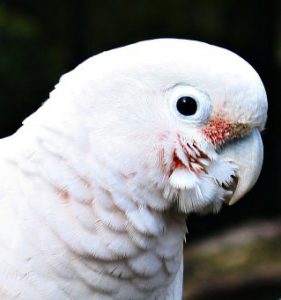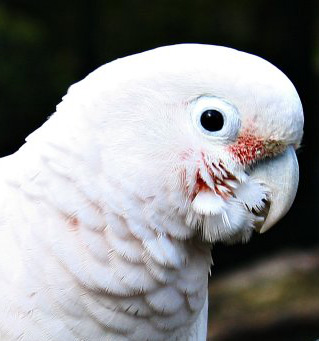
Lateralization has to do with using one side of the body (and/or brain) preferentially to do various activities. Evolutionarily, the advantage for the body would be to do different things simultaneously. For the brain, the rationale is that if the different sides were not identical then more “computing” power could be crammed into the same-sized skull.
Humans, although we appear completely symmetrical—at least with respect to the right and left sides of our bodies—are lateralized, in both body and brain. For some activities, such as speech, we clearly do not notice that the left side of our brain is doing almost all the work. We probably also don’t notice that almost all of us are right-eye dominant (until we are getting our eyes checked, for example…or look at a distant object that is partially obscured by a near object…focus on the nearer object, then cover one eye at a time…you’ll notice a difference). And most humans are right-footed—if asked to take a step, we start with our right foot.
When it comes to handedness, however, everyone is aware of favoring one hand for many activities (writing, painting, etc.)…and most humans are right-handed. Handedness in other species is trickier to establish. A study looking at a large number of different species found 51.26% showing evidence for population-level asymmetries, 16.81% showing evidence for individual-level asymmetries and 31.93% showing no evidence for asymmetry (Strӧckens et al., 2012).
Left Foot or Right Foot?

Birds are particularly, tricky. Although much research has demonstrated left-sided brain laterality for vocal behavior in birds that learn their vocalizations (Chirathivat et al., 2015), it is not clear how that relates to footedness. Most studies investigated tasks such as which foot was used to hold food; for parrots, most cockatoos were left-footed, most other parrots were right-footed, and lorikeets didn’t seem to have a preference (Strӧckens et al., 2012).
However, MacNeilage and colleagues (1987) hypothesize that the limb that is supporting the body is actually the dominant one, as it has to be both strong and fine-tuned for balance. Another possibility is that an individual choses a limb with respect to a particular task that needs to be completed (Rogers, 2007, 2009). Not enough data yet exists to prefer one hypothesis over another.
In any case, all such studies need a fairly large sample size to differentiate individual preferences from species-wide preferences, and obviously my lab does not qualify. However, I was given the opportunity to collaborate with my Austrian colleagues, who have a large aviary of Goffin’s cockatoos (Cacatua goffiniana)—we could test each bird on a series of tasks that varied in postural, spatial, and cognitive demands (Colbourne et al., 2024).
The procedure was as follows. We first tested each bird as to what foot they used to hold food; three birds were right-footed and 12 were left-footed, but not all habituated to the experimental situation, so only nine birds were tested (seven left-footed and two right-footed). We then used three tasks, each with simple and difficult versions (see Colbourne et al., 2024 for the details). In each case, the simple task could be achieved by using a foot to grasp the reward fairly quickly, whereas the difficult task required a series of actions to release the reward.
Switching Foots
The results were fascinating. As expected, the difficult trials took a lot longer to solve. The main result was that the birds tended to use their food-handling dominant foot for only two of the three simple trials and only one of the difficult trials; however, they tended to do a lot of foot-switching during difficult trials. Some birds mostly used their nonfood-handling foot on the difficult trials whereas others mostly used their food-handling foot. In some cases, they seemed simply to use the most convenient foot.
So our data did not strongly support any of the common hypotheses—that the food-holding foot would be dominant for all other tasks, that the foot used for balance would be dominant (e.g., why would birds switch feet multiple times during a task if that were the case?), or that a particular task would be more likely to require use of either the food-holding foot or the foot used for balance/strength (e.g., it varied across individuals).
What our study could not address is anything about how the birds’ physical behavior correlates with their brain lateralization. Although Kaplan and Rogers (2021) found a correlation between the extent of left-footedness for feeding and a larger area that corresponds to the human cerebral cortex (implying more high-level processing), we did not find that the more lateralized birds were more successful; however, almost all birds were always successful, making any such measurements moot.
The real take-home message simply seems to be that lateralization is not always easily determined by use of simple tasks, and that far more research is needed to understand the phenomenon. By the way: It might be fun to keep note of how your own bird solves foraging puzzles—does it primarily use its beak, or does it involve its feet—and does it always use the same foot, and is it the food it uses to hold food?
References
- Chirathivat, N., Raja, & Gobes, S. (2015). Hemispheric dominance underlying the neural substrate for learned
vocalizations develops with experience. Sci Rep 5, 11359 https://doi.org/10.1038/srep11359 - Colbourne, J.A.D., Hanon, L., Pepperberg, I.M., & Auersperg, A.M.I. (2024). Putting the best foot forward: Limb
lateralization in the Goffin’s cockatoo (Cacatua goffiniana). J. Comp. Psychol. Advance online publication.
https://dx.doi.org/10.1037/com0000393 - Kaplan, G., & Rogers, L.J. (2021). Brain size associated with foot preferences in Australian parrots. Symmetry,
13(5), Article 867. https://doi.org/10.3390/sym13050867 - MacNeilage, P.F., Studdert-Kennedy, M.G., & Lindblom, B. (1987). Primate handedness reconsidered. Behav. &
Brain Sci., 10(2), 247–263. https://doi.org/10.1017/S0140525X00047695 - Rogers, L.J. (2007). Lateralization in its many forms, and its evolution and development. Special Topics in
Primatology, 5, 22–56. https://doi.org/10.1016/S1936-8526(07)05002-6 - Rogers, L.J. (2009). Hand and paw preferences in relation to the lateralized brain. Phil. Trans. Royal Soc. B: Bio.
Sci., 364(1519), 943–954. https://doi.org/10.1098/rstb.2008.0225 - Ströckens, F., Güntürkün, O., & Ocklenburg, S. (2012). Limb preferences in non-human vertebrates. Laterality,
18(5), 536–575. https://doi.org/10.1080/1357650X.2012.72300
